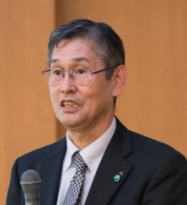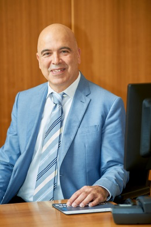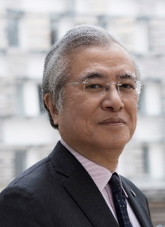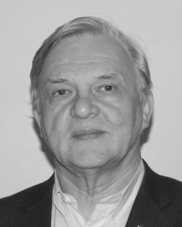Keynotes
The Birth and Development of Outdoor Large-scale Color Display System
Tuesday, October 9, 18:00-19:00
Engineers work to create technical innovation in response to changes in the environment. The outdoor large-scale color display system is one of the innovations, which is approved as IEEE Milestone. It was developed as the world's first system and installed at Dodger Stadium, USA in 1980. The system named “Diamond Vision” achieved bright and high-quality color moving images with low power consumption using matrix-addressed CRTs (Cathode Ray Tubes) as pixels. In the process of technical transition of pixel from CRT to LED, the picture quality drastically improved. Moreover, with increased dimensions and resolution, the system has entertained and informed millions of people in sports facilities and public spaces worldwide. The birth and development of Diamond Vision is a good material to study about the innovation. This talk will look back on the history of Diamond Vision and think about the new innovation and what is important for engineers.
Dr. Zenichiro Hara

Mitsubishi Electric Corporation, Japan
He graduated from Department of Electrical Engineering in Kyushu University, and he received bachelor and master degrees in 1979 and 1981, respectively. In 1981, he joined Mitsubishi Electric Corporation. He had been engaged in the research and development of large-size tiled displays. He completed the doctor thesis entitled “Research on Developing Large Size Matrix Display and Improving Picture Quality” and received the doctor of engineering from Nagasaki University in 2002.
He is currently a head engineer at Mitsubishi Electric Corporation. His experience is related especially in the area of electronic display. He proposed IEEE milestone as “Outdoor large-scale color display system, 1980” in 2015. It was approved in 2016 and the dedication ceremony was held in March 2018. He received R&D 100 Awards in 2011 from R&D Magazine, moreover Special Recognition Awards in 2014 from Society for Information Display. He wrote the essays for young engineers and he was awarded YP Prize and 1st Prize at the 8th and 9th IEEE Career Building Essay Contest respectively.
From Consortia to Global Consensus Standards: IEEE Standardization as a Highway to Global Markets
Thursday, October 11, 17:00-17:30
Dr. Ing. Konstantinos Karachalios

IEEE Standards Association
A globally recognized leader in standards development and intellectual property, Dr. Ing. Konstantinos Karachalios is managing director of the IEEE Standards Association and a member of the IEEE Management Council. As managing director, he has been enhancing IEEE efforts in global standards development in strategic emerging technology fields, through technical excellence of staff, expansion of global presence and activities and emphasis on inclusiveness and good governance, including reform of the IEEE standards-related patent policy. As member of the IEEE Management Council, he championed expansion of IEEE influence in key techno-political areas, including consideration of social and ethical implications of technology, according to the IEEE mission to advance technology for humanity. Results have been rapid in coming and profound; IEEE is becoming the place to go for debating and building consensus on issues such as a trustworthy and inclusive Internet and ethics in design of autonomous systems. Before IEEE, Konstantinos played a crucial role in successful French-German cooperation in coordinated research and scenario simulation for large-scale nuclear reactor accidents. And with the European Patent Office, his experience included establishing EPO’s patent academy, the department for delivering technical assistance for developing countries and the public policy department, serving as an envoy to multiple U.N. organizations. Konstantinos earned a Ph.D. in energy engineering (nuclear reactor safety) and masters in mechanical engineering from the University of Stuttgart.
A compact and efficient real-time OS for embedded computers
Thursday, October 11, 17:30-18:00
Today, the Internet of Things (IoT) is an important emerging technology. Typical IoT application architecture consists of the cloud and the edge nodes. For cloud computing, resource-rich environment allows the use of powerful CPUs. On the other hand, edge nodes need to be lightweight to operate in resource-poor environment so that we can connect many objects in our surrounding to the cloud. Thus, the CPUs for edge nodes are often not so powerful.
Due the scarce resources, the system software for edge nodes must be lightweight (e.g., small memory footprint, low-power consumption, etc.). It also needs talk to the cloud using appropriate low-power network protocol stack such as Bluetooth Low Energy, 6LoWPAN, etc., and often needs to response to external stimuli in a real-time fashion.
TRON Project, under the leadership of Ken Sakamura, has tackled the needs for such embedded computers by providing a series of TRON real-time OSs (RTOSs) since its inception in 1984. The TRON RTOS family has enjoyed the use by many users and in variety of applications: control modules of Japanese space satellite, consumer electronics goods such as digital cameras, printers, copiers, mobile phones (its RF module control), automobile engine control, etc. The TRON RTOS family specifications have become the de facto standards of RTOS in Japan and beyond.
In August 2017, TRON Forum, an not-for-profit organization that promotes the activity of TRON Project, signed an agreement with IEEE Standards Association (IEEE SA) to share the copyright of the specification of μT-Kernel 2.0, the latest member of TRON RTOS family, for the explicit purpose of turning the specification into an IEEE standard. An IEEE SA working group, WG 2050, was formed in late 2017 for the standardization work. Mr. Stephen Dukes of IEEE Consumer Electronics Society chaired the WG. The WG membership consisted of stake holders in consumer electronics industry.
Thanks to the diligence of WG 2050, IEEE Std 2050-2018 based on the original μT-Kernel 2.0 specification became an official IEEE standard in July 2018 in a record-breaking short time for such a document to become an IEEE standard.
IEEE has already produced the famous POSIX standard for UNIX-like operating systems that can be used on the resource-rich cloud side. μT-Kernel 2.0 is meant to be the OS for the resource-poor edge node side. It is hoped that IEEE Std 2050-2018 will popularize and encourage the use of μT-Kernel 2.0 by many engineers all over the world
Dr. Ken Sakamura

Toyo University
Emeritus Professor
The University of Tokyo
CEO
The YRP Ubiquitous Networking Laboratory
Dr. Ken Sakamura was born in Tokyo in 1951. He is currently the Dean of the Faculty of Information Networking for Innovation and Design (INIAD), Toyo University. He has the title of emeritus professor of the University of Tokyo. He also serves as CEO of YRP Ubiquitous Networking Laboratory. He has been the leader of the TRON project since 1984. In this capacity, he has designed the TRON open computer system architecture, which will be useful for the Internet of Things (IoT). Today the real-time operating systems based on the TRON specifications are used for mobile phones, digital cameras, and many consumer electronics appliances. He won many awards: Medal with Purple Ribbon from Japanese government in 2003, Japan Academy Prize in 2006 and ITU150 Award in 2015, to name a few. He is a Life fellow and the golden core member of IEEE Computer Society.
Electric Vehicles – The Future of Transportation?
Thursday, October 11, 18:00-19:00
This presentation provides an overview of why electric vehicles are an essential for future transportation. It discusses energy and environment issues that make the electric vehicles important, as well as their potential in future transportation.
Dr. Stefan Mozar

Dynexsys
Adjunct Professor
Guangdong University of Technology
Dr. Stefan Mozar is the Past President of the IEEE Consumer Electronics Society. He works as an independent consultant and is an Adjunct Professor at Guangdong University of Technology (GDUT) in South China. He obtained his engineering degrees from the University of New South Wales and his MBA from the University of Technology, Sydney. He is a Fellow of the IEAust, and a Chartered Professional Engineer. He is also a senior member of the IEEE, and ASQ. Most of his experience is in consumer electronics, where he has worked for organizations such as Philips in their Singapore Video Development labs, and for Grundig and Nordmende in Germany. Currently he is a board member of the IEEE Product Safety Engineering Society. He has served on the IEEE Technical Activities Board (TAB.) He has worked on projects that have won about 30 international design awards. He also received several awards form the IEEE for his contributions.